Showing Spotlights 73 - 80 of 158 in category All (newest first):
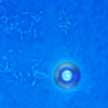 Researchers demonstrate for the first time a multifunctional biophotonic platform enabled by the multiband resonance peaks of the plasmonic moire metasurfaces. Benefiting from the multiband nature of moire metasurface and the near-field enhancement from the metal-insulator-metal configuration, the scientists achieved a dual-band metasurface patch with strong plasmonic resonances at both near-infrared and mid-infrared regimes.The plasmonic nanostructures support plasmon resonances at different wavelengths due to the gradient in size and shape.
Researchers demonstrate for the first time a multifunctional biophotonic platform enabled by the multiband resonance peaks of the plasmonic moire metasurfaces. Benefiting from the multiband nature of moire metasurface and the near-field enhancement from the metal-insulator-metal configuration, the scientists achieved a dual-band metasurface patch with strong plasmonic resonances at both near-infrared and mid-infrared regimes.The plasmonic nanostructures support plasmon resonances at different wavelengths due to the gradient in size and shape.
Oct 12th, 2016
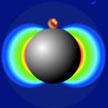 Localization of photons to nanoscale volumes with the aid of plasmonic nanoantennas opened new horizons in bio(chemical) sensing and nanoscale imaging. However, plasmon resonances are short-lived, and the photon energy quickly dissipates as heat, creating temperature gradients on plasmonic chips. In new work, researchers have proposed design rules to engineer hybrid optical-thermal antennas that offer multiple functionalities in nanoscale light and heat management.
Localization of photons to nanoscale volumes with the aid of plasmonic nanoantennas opened new horizons in bio(chemical) sensing and nanoscale imaging. However, plasmon resonances are short-lived, and the photon energy quickly dissipates as heat, creating temperature gradients on plasmonic chips. In new work, researchers have proposed design rules to engineer hybrid optical-thermal antennas that offer multiple functionalities in nanoscale light and heat management.
Aug 24th, 2016
 Metal nanoparticles, when excited at optical frequencies, may experience localized surface plasmon resonances, which determine enhanced local electric fields, increased scattering cross sections, and high sensitivity to the environment refractive index. Thanks to these unique properties, they are widely utilized especially in biomedical sciences and engineering. Researchers have now conceived and demonstrated a new method to fully automate the design of metal nanoparticles.
Metal nanoparticles, when excited at optical frequencies, may experience localized surface plasmon resonances, which determine enhanced local electric fields, increased scattering cross sections, and high sensitivity to the environment refractive index. Thanks to these unique properties, they are widely utilized especially in biomedical sciences and engineering. Researchers have now conceived and demonstrated a new method to fully automate the design of metal nanoparticles.
Jan 7th, 2016
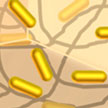 So far, most of the applications of plasmonic nanostructures rely on solid two-dimensional substrates such as silicon, glass, plastic, or paper. Such substrates offer rather limited accessible surface area, thus severely limiting the volumetric density of the nanostructures. Researchers now have developed a 3D material with a high density of plasmonic nanostructures that are completely accessible. The SERS and photothermal performance of this novel 3D material is superior compared to that of conventional 2D plasmonic surfaces.
So far, most of the applications of plasmonic nanostructures rely on solid two-dimensional substrates such as silicon, glass, plastic, or paper. Such substrates offer rather limited accessible surface area, thus severely limiting the volumetric density of the nanostructures. Researchers now have developed a 3D material with a high density of plasmonic nanostructures that are completely accessible. The SERS and photothermal performance of this novel 3D material is superior compared to that of conventional 2D plasmonic surfaces.
Dec 16th, 2015
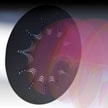 Researchers have demonstrated that perfect orbital angular momentum could be generated in optical nanostructures inspired by catenaries - the curve that a free-hanging chain assumes under its own weight. They used optical catenary-shaped structures to convert circularly polarized light to helically-phased beam carrying orbital angular momentum. Similar to the 'catenary of equal strength', the phase gradient of the optical catenary is equal everywhere, which is a direct result of its special geometric shape.
Researchers have demonstrated that perfect orbital angular momentum could be generated in optical nanostructures inspired by catenaries - the curve that a free-hanging chain assumes under its own weight. They used optical catenary-shaped structures to convert circularly polarized light to helically-phased beam carrying orbital angular momentum. Similar to the 'catenary of equal strength', the phase gradient of the optical catenary is equal everywhere, which is a direct result of its special geometric shape.
Oct 2nd, 2015
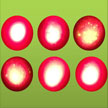 Upconversion luminesce materials are promising for widespread application ranging from optical devices to biodetection and cancer therapy, the near-infrared light excited upconversion materials are attracting much research attention. Researchers have achieved an ultra-strong and ultra-pure red upconversion in erbium and ytterbium co-doped lutetium oxyfluorides through size and morphology control. These nanoparticles, with extremely strong and pure upconversion are promising candidates as novel luminescent reagents for high-contrast bio-imaging and bio-labeling.
Upconversion luminesce materials are promising for widespread application ranging from optical devices to biodetection and cancer therapy, the near-infrared light excited upconversion materials are attracting much research attention. Researchers have achieved an ultra-strong and ultra-pure red upconversion in erbium and ytterbium co-doped lutetium oxyfluorides through size and morphology control. These nanoparticles, with extremely strong and pure upconversion are promising candidates as novel luminescent reagents for high-contrast bio-imaging and bio-labeling.
May 4th, 2015
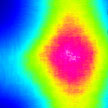 Plasmon lasers are promising nanoscale coherent sources of optical fields because they support ultra-small sizes and show ultra-fast dynamics. They can make possible single-molecule biodetectors, photonic circuits and high-speed optical communication systems. In new work, researchers have found a way to integrate liquid gain materials with gold nanoparticle arrays to achieve nanoscale plasmon lasing that can be tuned dynamical, reversibly, and in real time.
Plasmon lasers are promising nanoscale coherent sources of optical fields because they support ultra-small sizes and show ultra-fast dynamics. They can make possible single-molecule biodetectors, photonic circuits and high-speed optical communication systems. In new work, researchers have found a way to integrate liquid gain materials with gold nanoparticle arrays to achieve nanoscale plasmon lasing that can be tuned dynamical, reversibly, and in real time.
Apr 21st, 2015
 Typically, in clinical formulations of Magnetic Resonance Imaging (MRI) contrast agents, gram quantities of Gd(III) are needed to achieve sufficiently high contrast for examination. That's why the research imaging community is interested in developing new formulations of contrast agents able to bridge the gap between high contrast imaging of contrast agents dosed at low concentrations.
In new work, researchers report a new class of gold nanoconjugates that exhibit exceptionally high relaxivities at both low and high field strengths.
Typically, in clinical formulations of Magnetic Resonance Imaging (MRI) contrast agents, gram quantities of Gd(III) are needed to achieve sufficiently high contrast for examination. That's why the research imaging community is interested in developing new formulations of contrast agents able to bridge the gap between high contrast imaging of contrast agents dosed at low concentrations.
In new work, researchers report a new class of gold nanoconjugates that exhibit exceptionally high relaxivities at both low and high field strengths.
Mar 23rd, 2015
 Researchers demonstrate for the first time a multifunctional biophotonic platform enabled by the multiband resonance peaks of the plasmonic moire metasurfaces. Benefiting from the multiband nature of moire metasurface and the near-field enhancement from the metal-insulator-metal configuration, the scientists achieved a dual-band metasurface patch with strong plasmonic resonances at both near-infrared and mid-infrared regimes.The plasmonic nanostructures support plasmon resonances at different wavelengths due to the gradient in size and shape.
Researchers demonstrate for the first time a multifunctional biophotonic platform enabled by the multiband resonance peaks of the plasmonic moire metasurfaces. Benefiting from the multiband nature of moire metasurface and the near-field enhancement from the metal-insulator-metal configuration, the scientists achieved a dual-band metasurface patch with strong plasmonic resonances at both near-infrared and mid-infrared regimes.The plasmonic nanostructures support plasmon resonances at different wavelengths due to the gradient in size and shape.
 Subscribe to our Nanotechnology Spotlight feed
Subscribe to our Nanotechnology Spotlight feed





